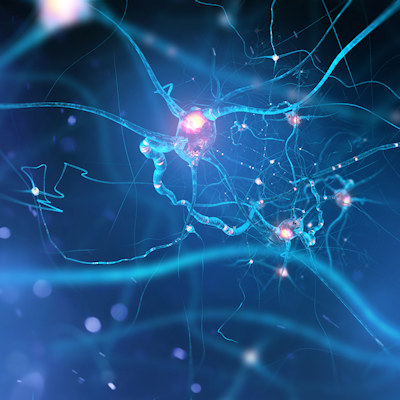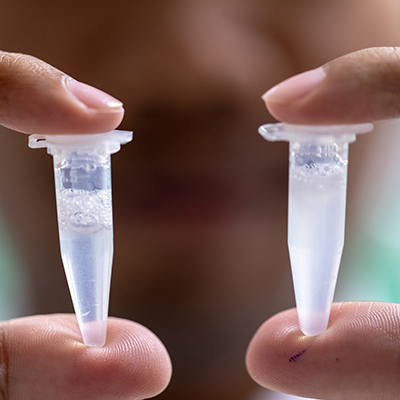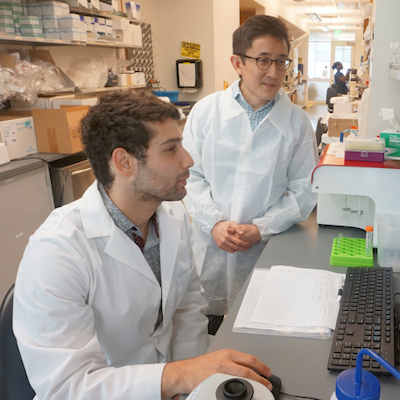November 21, 2022 -- Beckman Institute researchers have developed an innovative method to clearly visualize the structure and chemical composition of a human cell. Their study, published November 14 in the journal Proceedings of the National Academy of Sciences, utilizes signal detection to advance the field of chemical imaging.
Researchers have long been interested in determining what cells are made of and where cell structures reside. Optical microscopy uses visible light to illuminate surface-level features like color and structure, while chemical imaging uses invisible infrared (IR) light to reveal a sample's inner workings.
Upon exposure to IR light, a cell's temperature rises and it expands. Inside the cell, each type of molecule absorbs IR light at a different wavelength and emits a unique chemical signature. Examining absorption patterns, or spectroscopy, allows researchers to pinpoint molecule locations.
Recent spectroscopy innovations have increased the strength of IR wavelengths. However, as cells expand, the signal detector's motion becomes more exaggerated and generates "static" that impedes accurate measurements. Hence, increasing IR signal power has failed to improve chemical imaging quality.
The researchers' remedy divorced the IR signal from the detector's movement, allowing amplification without added noise. Instead of focusing on the strongest IR signal, they began with the smallest possible signal, ensuring effective implementation before upping the strength. Their technique enables high-resolution chemical and structural imaging of cells at the nanoscale level -- 100,000 times smaller than a hair -- without fluorescent labeling, or dyeing molecules to increase visibility.
"This work opens a range of possibilities, including a new way to examine the combined chemical and physical aspects that govern human development and disease," said University of Illinois professor and co-author Rohit Bhargava, PhD, in a statement.
Copyright © 2022 scienceboard.net










